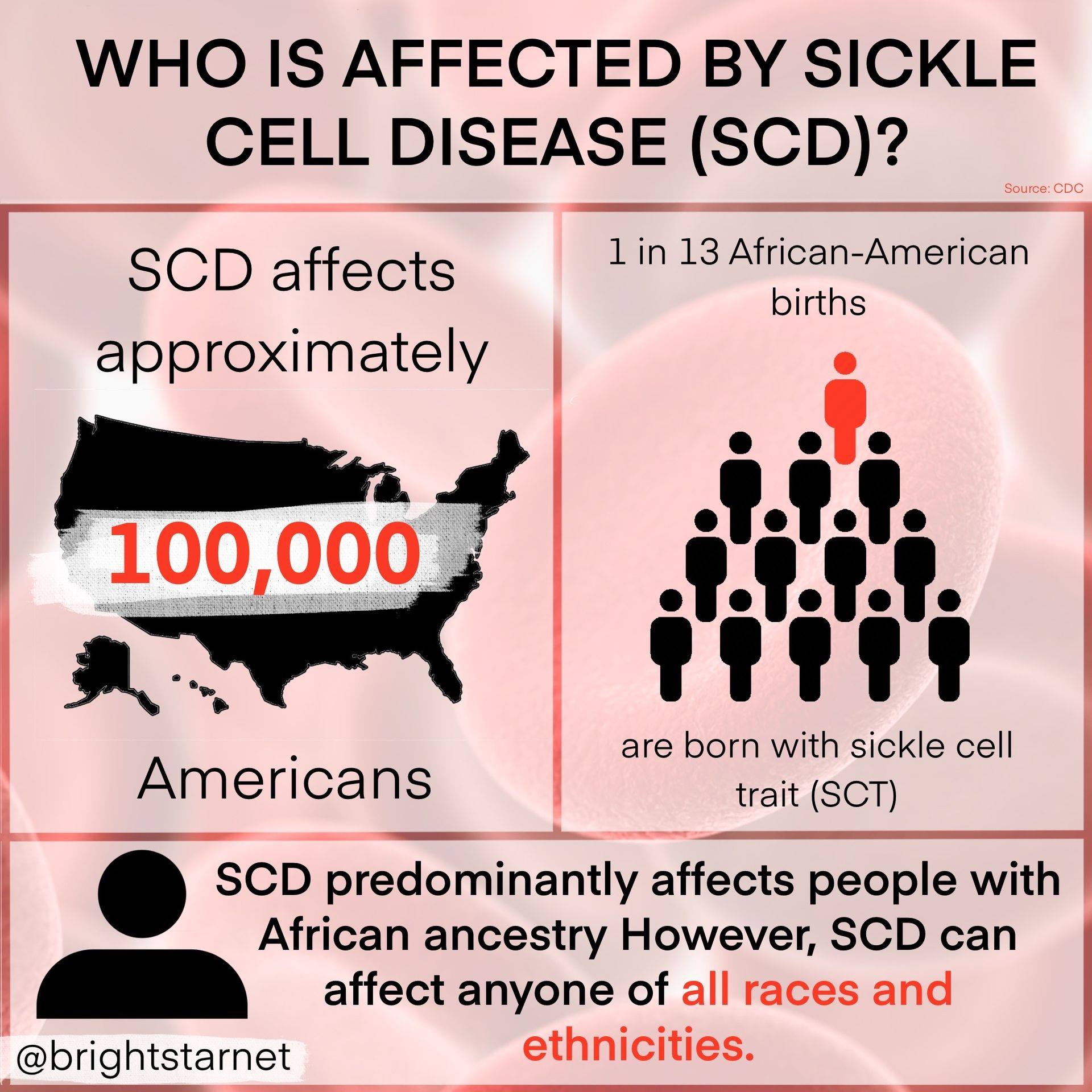Understanding the Faces and Facts Behind the Numbers
Every statistic tells a story — but behind every number is a life, a family, a community.
Sickle Cell Disease (SCD) affects approximately 100,000 Americans, making it one of the most common inherited blood disorders in the United States. And yet, despite its prevalence, SCD remains one of the most misunderstood and underrepresented conditions in public health discussions.
What Is Sickle Cell Disease?
Sickle Cell Disease is a genetic blood disorder that affects the shape and function of red blood cells. Instead of being round and flexible, sickle cells become stiff and crescent-shaped — making it difficult for them to move through blood vessels. This leads to painful episodes, anemia, fatigue, organ complications, and in severe cases, life-threatening crises.
But SCD is not just a medical diagnosis — it’s a lived experience that affects every aspect of daily life: education, work, family, and mental health.
The Numbers That Matter
According to the Centers for Disease Control and Prevention (CDC):
- Approximately 100,000 Americans live with Sickle Cell Disease.
- About 1 in 13 African-American babies is born with the sickle cell trait (SCT) — meaning they carry one copy of the gene responsible for SCD.
While SCD predominantly affects people of African ancestry, it’s important to recognize that this condition can affect anyone, regardless of race or ethnicity.
SCD also occurs among individuals with Hispanic, Middle Eastern, South Asian, and Mediterranean ancestry. It is, in truth, a global condition — one that calls for global empathy and collaboration.
Beyond the Numbers: The Human Impact
Living with SCD means more than managing symptoms — it means navigating a system that often overlooks invisible pain and underfunds crucial research.
Patients and families face frequent hospital visits, chronic fatigue, and limited access to innovative therapies. The emotional and financial toll can be overwhelming.
That’s why Brightstar Wellness Inc. is committed to bridging the gap between innovation and everyday life.
Through our integrative health programs, nutrition education, and caregiver support networks, we empower individuals to take control of their wellness journey — blending science, self-care, and community in powerful, life-changing ways.
Why Awareness Matters
Awareness is the first step toward change.
By sharing facts, stories, and resources, we can help:
- Break down stigma surrounding sickle cell disease
- Advocate for equitable access to treatment and care
- Support ongoing research and gene-based innovations
- Build stronger, informed, and compassionate communities
Every conversation matters. Every repost, every donation, every shared story adds light to a cause that has been in the shadows for far too long.
What You Can Do
- Learn: Educate yourself and others about SCD and SCT.
- Support: Donate to organizations advancing research, care, and patient empowerment.
- Advocate: Speak up for equitable access to healthcare and wellness resources.
- Connect: Follow and share content from initiatives like @brightstarnet to spread awareness.
Together, We Can Brighten the Future
At Brightstar Wellness Inc., we believe that wellness begins with knowledge, compassion, and collaboration.
When we understand who is affected by sickle cell disease — and how deeply it shapes lives — we take the first step toward building a world where no one is left behind.
Empowering lives. Bridging innovation and everyday wellness.


No responses yet